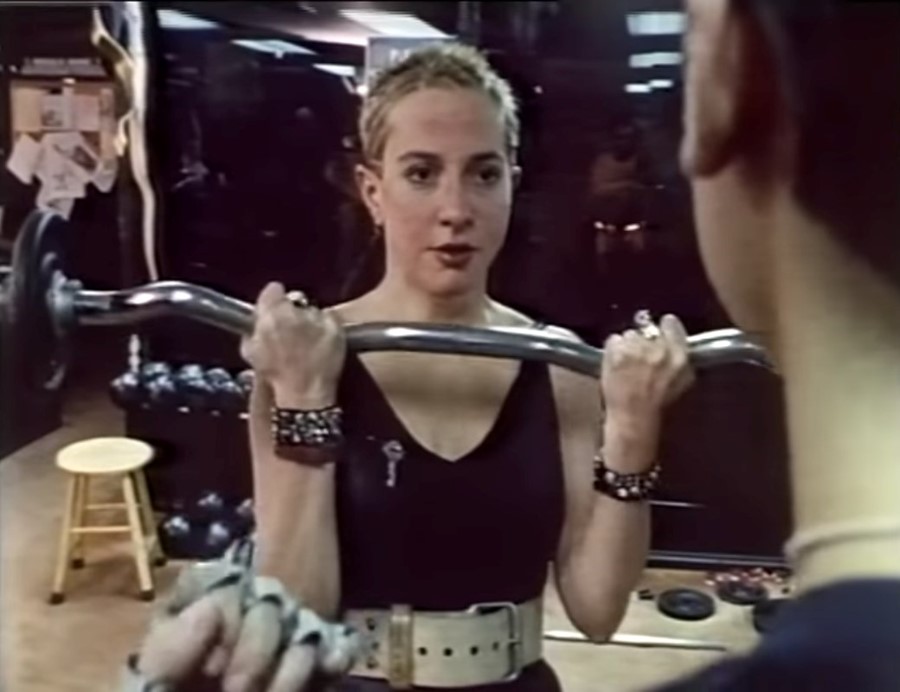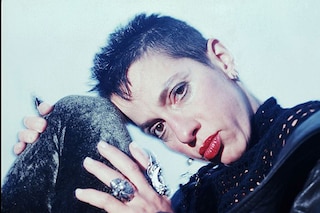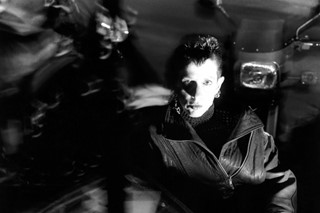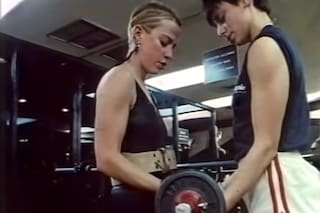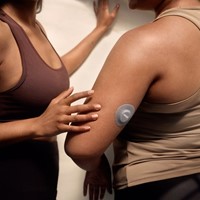The mind and body are often thought of as separate, even opposing, entities. But for writers like Acker and Eileen Myles, exercise and movement become powerful aids in the creation of their art
The caricatured image of an artist doesn’t typically involve a Schwarzenegger-esque physique. But buff artists do exist. American writer Kathy Acker, a raucous avant-garde superstar carved with muscles, was one of them. For her, bodybuilding was a way to play with identity and a mechanism to reconcile physical and intellectual pursuits.
In a world that increasingly devalues embodied practices in favour of digital interactions and virtual experiences, we are becoming ever more distanced from our own physicality and, as a result, our own person. “In our culture, we simultaneously fetishise and disdain the athlete, a worker in the body,” Acker wrote. “For we still live under the sign of Descartes. This sign is also the sign of patriarchy. As long as we continue to regard the body, that which is subject to change, chance, and death, as disgusting and inimical, so long shall we continue to regard our own selves as dangerous others.”
In light of this, arguments that emphasise the coextensive nature of mind and body, that promote unity through physical movement, are all the more pressing. Acker’s investigation of bodybuilding pushes back against prevailing notions of a mind-body dichotomy, and through her work we can reclaim an overall well-being enabled by holistic (physical and cerebral) gains.
Acker first began to grasp the value of exercise in Simone Forti’s postmodern dance workshops. Energised by dance, in the early 80s she joined a gym (like many New Yorkers). An instructor showed her how to lift weights. Later, she booked sessions with pioneering female bodybuilder and Robert Mapplethorpe muse, Lisa Lyon. Soon, she was at the gym three out of every four days.
As Acker delved further into the gym, bodybuilding grew into an art project. Encouraged by forerunners like jacked writer Yukio Mishima – whose bodybuilding and martial arts book, Sun and Steel, she revered – she crafted an artistic case for weightlifting. “Like Mishima,” writes Jason Mcbride in his 2022 Acker biography, Eat Your Mind, “Acker believed that bodybuilding opened up new ways of thinking about language and knowledge. Or, more precisely, a way to learn things without, or in spite of, ordinary language and expression.”
But, for Acker, writing about what she was experiencing in the gym wasn’t simple. She knew she was immersed in a rich and complex world but her body held out against ordinary language. “What does language in that place look like?” she wondered. “What actually takes place when I bodybuild?”

“Bodybuilding is a process, perhaps a sport, by which a person shapes her or his own body,” noted Acker. Yet, a bodybuilder isn’t an “athlete” in the traditional sense as form is privileged over function. Because of the aesthetic preferences and sculptural sensibilities, bodybuilding can offer a revealing glimpse into the links between art and exercise – two ostensibly disparate worlds that are actually full of overlaps.
Gradually, as these overlaps came into focus, Acker recognised that weightlifting generates a language of its own, one of the body. The outcome was her 1993 essay, “Against Ordinary Language: The Language of the Body”. The seminal text posits that bodybuilding can act as an entry point to grasping important mind-body connections that can aid with art-making. “Intensity times movement of maximum weight equals muscular destruction (muscular growth).” Acker writes. “Is bodybuilding’s equation between destruction and growth also a formula for art?”
With this in mind, are creativity and imagination “muscles” that can be exercised and developed? “Totally,” poet Eileen Myles, tells Dazed. “In the same way that confidence is entirely about repetition, what I know about writing and making art is that you need to appear at the site of the work and dive in almost daily to make something new. It’s the key to pleasure in art making too. Doing more is more fun.”
“In the same way that confidence is entirely about repetition, writing and making art is [about appearing] at the site of the work and diving in almost daily to make something new” – Eileen Myles
“Bodybuilding as well as yoga and dog walking force breathing and breath is right in the middle of it all,” Myles adds. “Also the time spent doing such practices is unimportant because what’s important is the breath and subsequently you breathe the work too. And the breath is more important than that as well.” Here, a line penned by Acker comes to mind: “Meaning approaches breath as I bodybuild, as I begin to move through the body’s labyrinths, to meet, if only for a second, that which my consciousness ordinarily cannot see.”
Jonny Negron, an artist whose work explores themes of eroticism and nightlife, expands on this thought. “Artistically I have always been drawn to figuration, to envision the body itself as a vehicle to imbue with deeper meaning. Naturally, anatomy and bodybuilding fascinates me.” In his own holistic approach to creativity, Negron says he believes in a balance of mind, body and spirit. “I do practise various callisthenics, as well as yogic exercise. It’s difficult to trace exactly what might trigger inspiration, rather, I’d say there are cumulative experiences that serve as puzzle pieces that inspire an idea. I aim to live my life as an extension of my artistic practice, to be receptive to any signs or messengers who appear at any moment.” Here, physicality becomes an extension of an artistic practice, and like Acker’s, Negron’s all-encompassing approach closes the divide between mind and body.
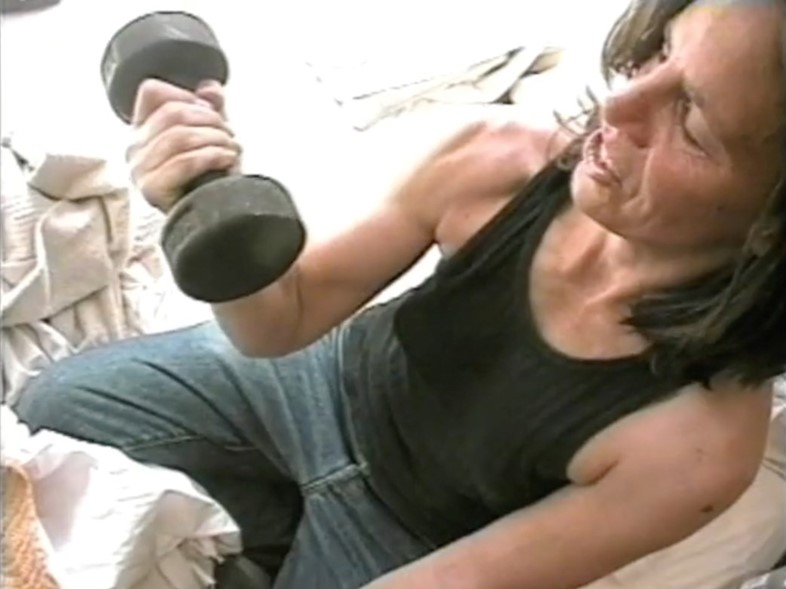
Closing their own divide, Eileen Myles illustrates further. “I like to take pictures, and in my writing shack the other day I saw part of my legs in this antique barber’s mirror that’s nailed to the wall,” they say. “In it, [I saw] my own thighs in bright red orange shorts and I did squats and [I saw] the blue sky with a tree running through it for a speck in an upper rectangular window and I wanted that picture so much. The composition was so perfect and I couldn’t take it.”
Poetically squatting in their writing shack, Myles is bridging the gap between art and exercise much like Acker was in a Manhattan gym. Strengthened by physical exercise, we can learn, grow and construct beyond the limits of ordinary language. By plunging into bodily movement, one can unlock a world of haptic knowledge. Acker writes: “By trying to control, to shape, my body through the calculated tools and methods of bodybuilding, and time and again, in following these methods, failing to do so, I am able to meet that which cannot be finally controlled and known: the body.”
Above all, by digging into Acker’s engagement with bodybuilding and the insights of other artists, the varying benefits of embodied practices can begin to be unearthed; it becomes clear that weightlifting (and exercise in general) can improve strength and quality of life, but also align the mind and body. The point is, it’s not a waste of time to move. Getting buff in one’s own individual ways can enable makers and their muscles to better connect with themselves and their work – just like Kathy Acker did.
Join Dazed Club and be part of our world! You get exclusive access to events, parties, festivals and our editors, as well as a free subscription to Dazed for a year. Join for £5/month today.
